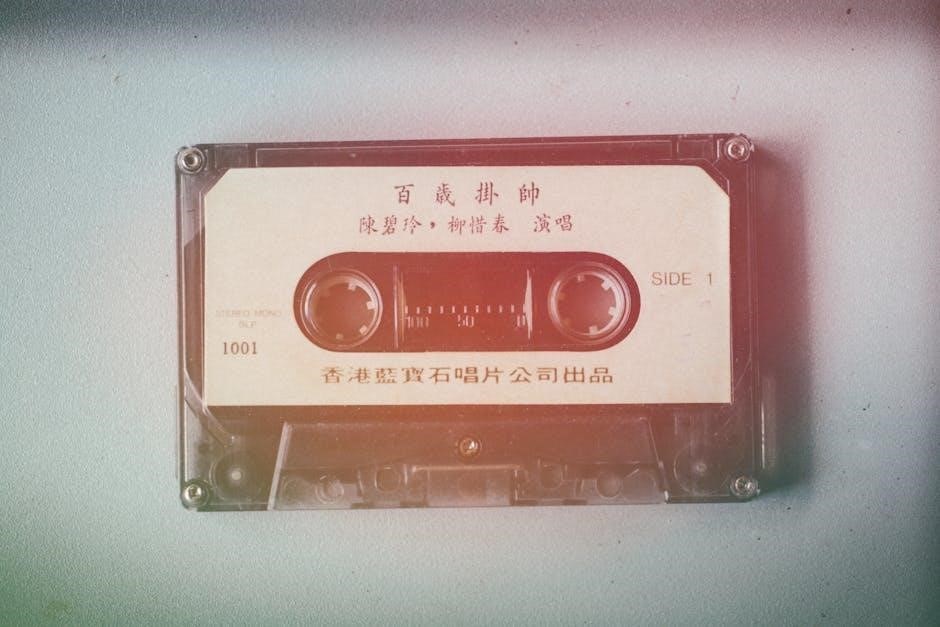
KT tape is a therapeutic tool used for support, reducing pain, and prophylaxis of damage to the Achilles tendon.
Achilles tendonitis involves pain; taping can fix the ankle and lower shin, offering support during heavy loads.
Brief overview of KT tape and its purpose
Kinesiology tape, commonly known as KT tape, is a flexible athletic tape used to support muscles and joints. In the context of Achilles tendonitis, KT tape aims to alleviate pain, reduce inflammation, and enhance athletic performance. It works by lifting the skin, creating space between the skin and underlying tissues, potentially improving circulation and reducing pressure on pain receptors. Dynamic taping may also be considered. Its purpose is to provide support to the Achilles tendon, aiding in the management of pain and promoting the healing process, particularly during activity and heavy loads.
Explanation of Achilles tendonitis: causes and symptoms
Achilles tendonitis is an overuse injury affecting the Achilles tendon, the large tendon connecting the calf muscles to the heel bone. It commonly arises from repetitive strain, such as that experienced during running or other high-impact activities, especially with heavy loads. Causes may include sudden increases in exercise intensity, tight calf muscles, inadequate stretching, improper footwear, or pronation issues. Symptoms typically involve pain and stiffness along the Achilles tendon, particularly in the morning or after exercise. Swelling, tenderness to the touch, and a limited range of motion in the ankle may also be present. Prophylaxis is important.
Benefits of KT Tape for Achilles Tendonitis
KT tape aids in pain reduction and provides support to the Achilles tendon, ankle, and foot during activity.
Pain reduction and support
KT tape is used to provide support and reduce pain associated with Achilles tendonitis. By applying KT tape to the affected area, individuals often experience a noticeable decrease in discomfort, allowing for improved mobility and participation in daily activities. The tape’s unique elastic properties gently lift the skin, creating space between the skin and underlying tissues. This decompression effect can help alleviate pressure on pain receptors, leading to reduced pain perception. Furthermore, the support provided by KT tape can stabilize the Achilles tendon, preventing excessive strain and further injury. The tape’s ability to conform to the body’s contours ensures a comfortable and secure fit, enabling individuals to move with greater confidence and less pain. This support mechanism is crucial for managing Achilles tendonitis symptoms and promoting healing;
Improved circulation and reduced inflammation
KT tape can enhance local blood circulation and reduce inflammation associated with Achilles tendonitis. The lifting effect of the tape on the skin creates space, potentially improving blood flow to the injured area. Increased circulation delivers essential nutrients and oxygen, which are vital for tissue repair and healing. Additionally, improved blood flow helps remove metabolic waste products that contribute to inflammation. The tape’s dynamic properties allow it to gently massage the tissues during movement, further stimulating circulation and lymphatic drainage. This can help reduce swelling and alleviate pressure on the Achilles tendon. By promoting better circulation and reducing inflammation, KT tape can create an optimal environment for the body’s natural healing processes to occur, accelerating recovery from Achilles tendonitis and improving overall comfort.

KT Tape Application Techniques for Achilles Tendonitis (PDF Instructions)
Step-by-step guide to applying KT tape for Achilles tendonitis
Step 1: Prepare a Y-tape of 45-50 cm.Step 2: Place the anchor of the Y-tape on the heel. Ensure the skin is clean and dry before application to improve adhesion.Step 3: Stretch the Achilles tendon area by dorsiflexing the foot. This ensures the tape is applied with the tendon in an elongated position;Step 4: Apply the tape along the Achilles tendon without tension. The goal is to provide support without restricting movement.Step 5: Smooth the tape onto the skin to ensure proper adhesion. Avoid wrinkles or air pockets that could reduce effectiveness or cause skin irritation. This technique aids in the prophylaxis of damage to the Achilles tendon, ankle, and foot, especially during sports or heavy loads. Proper application results in fixation of the ankle and lower third of the shin, providing stability and support to the affected area. Consult a professional if unsure.
Y-strip application method: anchor placement and tension
The Y-strip application is a common technique for Achilles tendonitis. Begin by preparing a Y-tape, approximately 45-50 cm in length. The anchor point is crucial; it should be placed firmly on the heel, providing a stable base for the tape. Ensure the skin is clean and dry to enhance adhesion. Prior to adhering the tape along the Achilles tendon, slightly stretch the tendon by dorsiflexing the foot. When applying the Y-strips, it’s vital to minimize tension; the tape should gently support the tendon without constricting movement. Excessive tension can cause skin irritation or discomfort. The Y-strips should diverge, following the contours of the calf muscle, ensuring comprehensive support and stability. Proper anchor placement and controlled tension are key to effective pain relief and improved function. Always smooth down the tape to secure adhesion and avoid wrinkles.

Precautions and Considerations
Be aware of potential skin irritation from adhesives; discontinue use if redness, itching, or discomfort occurs.
Skin sensitivity and allergies to adhesive
Before applying KT tape extensively, it is crucial to test a small area of skin to check for any adverse reactions. Individuals may experience skin sensitivity or allergies to the adhesive used in KT tape, which can manifest as redness, itching, blistering, or other forms of irritation. If you notice any signs of skin reaction, remove the tape immediately and discontinue further use; Consider using hypoallergenic KT tape alternatives designed for sensitive skin. Proper skin preparation, such as cleaning and drying the area thoroughly before application, can also help minimize the risk of irritation. Avoid applying KT tape to broken or damaged skin, as this can increase the likelihood of adverse reactions and potential infections. If skin irritation persists or worsens, consult a healthcare professional for guidance and appropriate treatment. Always prioritize skin health and comfort when using KT tape to ensure a safe and effective experience and reduce the risk of complications associated with allergic reactions or skin sensitivities caused by the tape’s adhesive properties. Remember to monitor the taped area regularly for any signs of irritation or discomfort and address any concerns promptly to prevent further issues;
When to seek professional medical advice
While KT tape can be a helpful tool for managing Achilles tendonitis symptoms, it is not a substitute for professional medical care. Seek advice from a healthcare professional if you experience severe or persistent pain, limited range of motion, or any signs of infection such as redness, swelling, or pus. It is essential to consult a doctor or physical therapist for an accurate diagnosis and comprehensive treatment plan, especially if your symptoms do not improve with KT tape and other conservative measures. Professional guidance is crucial to rule out other underlying conditions, such as a partial or complete Achilles tendon tear, that may require more aggressive interventions. Additionally, seek medical advice if you have a history of skin sensitivities, allergies, or other medical conditions that may affect the suitability of KT tape for your specific needs. A healthcare provider can assess your individual situation, provide personalized recommendations, and ensure that you receive the most appropriate and effective care for your Achilles tendonitis. Do not hesitate to seek professional help if you have any concerns about your condition or the use of KT tape.

Alternative Treatments for Achilles Tendonitis
Rest, ice, compression, and elevation (RICE) method
Initial treatment focuses on rest, ice, and anti-inflammatories to improve flexibility of the quadriceps.
Rest, ice, compression, and elevation (RICE) method
The RICE method is a cornerstone in managing Achilles tendonitis. It involves several key steps aimed at reducing inflammation and promoting healing. Rest is crucial; avoid activities that aggravate the tendon. Ice should be applied for 15-20 minutes at a time, several times a day, especially after activity. Compression, using a bandage, helps to reduce swelling. Elevation, keeping the foot raised above heart level, also aids in minimizing edema. This approach is often the first line of defense and complements other therapies, like KT taping. Integrating the RICE method with KT tape application can offer a more comprehensive approach to pain relief and recovery from Achilles tendonitis, supporting the healing process effectively and efficiently by addressing both the symptoms and the underlying inflammation.
Physical therapy exercises and stretching
Physical therapy is vital in Achilles tendonitis recovery, incorporating exercises to improve flexibility and strength. Stretching, particularly calf stretches, enhances tendon length and reduces strain. Strengthening exercises, focusing on the calf muscles, improve support and stability. Gradual strengthening of the quadriceps is also beneficial. A physical therapist can design a tailored program, ensuring proper technique and progression to avoid re-injury. Combining these exercises with KT taping can provide additional support and pain relief, facilitating a more effective rehabilitation process. Consistency is key for achieving long-term improvements and preventing recurrence of Achilles tendonitis by restoring function.

Research and Evidence on KT Tape Effectiveness
Studies examine KT tape’s impact on pain, foot function, balance, and foot pressure in plantar fasciitis patients.
Studies on pain relief and functional improvement
Research into KT tape effectiveness focuses on its ability to provide pain relief and improve functional outcomes for individuals suffering from Achilles tendonitis. Dynamic taping versus kinesiology taping on pain, foot function, balance, and foot pressure is being researched for plantar fasciitis patients. The studies often compare KT tape applications to other conservative treatments and control groups to determine the magnitude of its impact. Particular attention is paid to improvements in range of motion, reduced discomfort during activity, and the overall return to pre-injury activity levels. By evaluating pain scores, functional assessments, and patient-reported outcomes, researchers aim to establish evidence-based guidelines for KT tape use in managing Achilles tendonitis and other related conditions. The goal is to determine whether KT tape provides statistically significant and clinically meaningful benefits in pain management and functional recovery compared to alternative approaches.
Comparison with other treatment options
When considering KT tape for Achilles tendonitis, it’s essential to compare it with other common treatment options to determine its relative effectiveness. Initial treatments often involve rest, ice, anti-inflammatories, and physical therapy exercises to improve flexibility and gradually strengthen the quadriceps. Studies evaluate KT tape against these standard approaches, assessing pain reduction, functional improvement, and recovery time. Other options include traditional athletic taping, bracing, and in some cases, more invasive interventions. Researchers analyze the benefits and drawbacks of each approach to provide clinicians and patients with informed choices. Factors such as cost, ease of application, potential side effects, and individual patient preferences are considered when comparing KT tape with alternative treatments. The aim is to identify the most appropriate and effective strategy for managing Achilles tendonitis based on the specific needs and circumstances of the individual.
KT tape aids Achilles tendon prophylaxis and fixation but has limits that must be considered carefully.
KT tape offers benefits such as support and potential pain reduction for Achilles tendonitis, aiding in prophylaxis against damage to the Achilles tendon, ankle and foot, especially during sports or heavy loads. It also contributes to fixation of the ankle and the lower third of the shin. However, it’s crucial to acknowledge the limitations. While KT tape can assist in managing symptoms, it is not a standalone cure for Achilles tendonitis. Its effectiveness may vary among individuals, and it should be used in conjunction with other treatments like rest, ice, compression, and elevation (RICE), as well as physical therapy exercises to improve flexibility and gradually strengthen the affected area. Furthermore, proper application is essential to maximize its benefits, and individuals should be aware of potential skin sensitivities or allergies to the adhesive. Consulting with a healthcare professional is recommended to determine the suitability of KT tape and to develop a comprehensive treatment plan.
Importance of proper application and consulting with a healthcare professional
Proper application of KT tape is crucial for achieving the desired therapeutic effects for Achilles tendonitis, such as pain reduction, support, and improved circulation. Incorrect application may lead to ineffective treatment or even exacerbate the condition. Additionally, consulting with a healthcare professional, such as a physical therapist or doctor, is of paramount importance. These professionals can accurately diagnose the underlying cause of Achilles tendonitis, assess the suitability of KT tape for the individual’s specific condition, and provide guidance on proper application techniques. They can also offer a comprehensive treatment plan that may include other interventions like rest, ice, compression, elevation (RICE), physical therapy exercises, and anti-inflammatory medications, ensuring a holistic approach to managing Achilles tendonitis and promoting optimal recovery while considering any potential skin sensitivity.